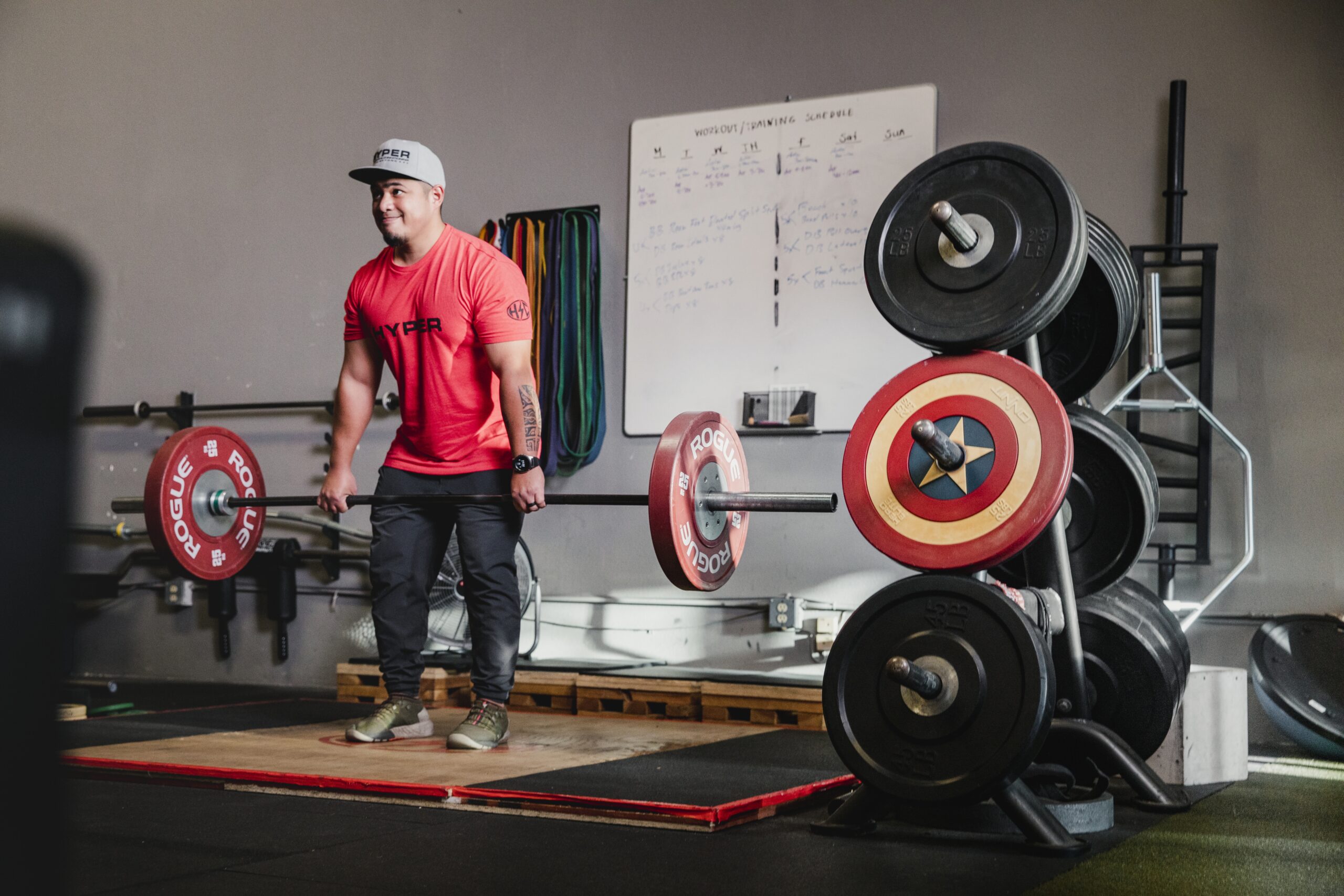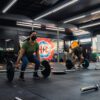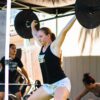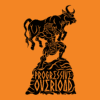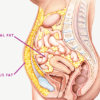Like most people, you’ve probably heard this before:
“Eat big to get big!”
We know that doing so can lead to impressive muscle gains. However, it can also lead to unwanted fat gain.
But what if we want to stay relatively lean and lose body fat while building muscle? Is that possible, or is it just a pipe dream?
Let’s see.
Muscle-Building Basics: What Does it Take to Grow?
Muscle growth (hypertrophy) is the process of increasing muscle size. Numerous factors influence how quickly and effectively it can occur:
Most notably, we need a training stimulus that disrupts homeostasis and creates a stress response (1).
When the stimulus is large and disruptive enough, the body is forced to adapt by building muscle and getting stronger. That way, it can better handle the same level of physical stress in the future (2).
Another essential factor for growth is a positive nitrogen balance. This is another way of saying that protein ingestion must exceed breakdown (3). As a result, the body has the building blocks it needs to repair exercise-induced muscle damage and accumulate more proteins.
Sleep, carbohydrate timing, taking certain supplements, and other tactics may add to the process, but this is essentially what it boils down to.
What is a Calorie Deficit?
A calorie deficit is simply a state of eating fewer calories than you burn. Doing so forces your body to break down lean (e.g., muscle) and fat tissue to get the remaining energy it needs to function normally (4).
For example, let’s say your body burns 3,000 calories per day, but you only consume 2,500. This means you’re in a 500-calorie deficit.
As a side note, a 500-calorie deficit is generally considered the gold standard for fat loss. It allows people to lose weight fast enough while staying within the recommended 0.5 to 1% of body weight per week (5).
The thing about a calorie deficit is that it means less energy is available for your body to use, which typically means your work capacity and ability to recover from training decreased to a degree.
Additionally, and this directly relates to today’s topic, a calorie deficit means your body doesn’t have the energy it needs to build new muscle. For most people, the best-case scenario is holding onto the muscle they already have.
The Science Behind Building Muscle In a Deficit
As mentioned above, a calorie deficit is not ideal for muscle gain. However, just because it isn’t ideal doesn’t mean it can’t happen.
Muscle growth largely depends on two things:
- Creating an adequate training stimulus, forcing the body to build muscle. (1)
- Eating enough protein to promote recovery and maintain protein turnover rates. (3)
This means it’s possible to build muscle in a deficit. For instance, in one popular study, researchers put 14 overweight police officers in a calorie-restricted, high-protein diet while also having them lift weights (6).
The experiment lasted 12 weeks, and all subjects lost an average of 2.5 kilograms while gaining an average of 2 kilograms of lean mass.
Now, you might be thinking, “But this is a study on overweight beginners. What about experienced trainees?”
Fortunately, we have one such study, too (7). In it, researchers took eight elite gymnasts (people who could do 17 pull-ups with their chest touching the bar) and put them on a 2,000-calorie diet for a month. The subjects did approximately 30 hours of training per week.
Following the experiment, the subject had lost approximately 2 kilograms and had gained close to 0.5 kilograms of lean tissue. Their body fat percentage dropped from around 8% to 5%.
That said, it’s worth noting that, while possible, body recompositions also occur incredibly slowly and are more difficult to track given the simultaneous increases in muscle and drops in body fat.
Plus, they work best for overweight people sensitive to training stressors (i.e., beginners).
Real-Word Strategies to Build Muscle In a Deficit
1. Keep the Deficit Small
A small calorie deficit allows you to shed body fat gradually without hindering your muscle-building abilities as much.
It’s best to keep your deficit to approximately 200-250 calories, which is half the deficit that’s typically recommended for fat loss.
For instance, if your maintenance is 2,750 calories, aim for 2,500-2,550.
2. Lift Weights Three or Four Times Weekly
Providing an adequate stimulus to your muscles is crucial for growth, even more so while in a calorie surplus.
However, training as hard as possible is not ideal because the calorie surplus will impair your recovery to a degree. So, the best option here is to lift weights three to four times weekly, focusing on the following:
- Doing at least one compound and isolation movement for each muscle group
- Training close to failure (leaving 1-2 reps in the tank) (8)
- Focusing on progressive overload – doing slightly more over time (extra weight, more reps, and similar)
- Training each muscle group twice per week with at least 48 hours of recovery in between (9)
3. Limit Your Cardio
Cardio offers some unique benefits and is a good idea to include. However, it can also generate fatigue, impair recovery, and limit your performance in the weight room.
So, it’s best to limit it to a couple of low-intensity sessions (20-30 minutes each, maximum) or avoid it altogether.
It’s best to do your cardio on days off from lifting weights to minimize the risk of an interference effect (10).
4. Eat Enough Protein
Eating enough protein is the final piece of the puzzle. The nutrient provides the building blocks (amino acids) the body needs for repairing muscle, promoting recovery, and building new muscle. Without it, all other efforts would be in vain.
The general recommendation is to have 0.8 to 1 gram per pound of body weight (11). It might be better to aim for the upper limit of the range simply to ensure optimal protein turnover (replacing old and worn-out proteins with new ones).
Conclusion
There you have it:
Building muscle in a calorie deficit is possible. However, it presents challenges, and you must be more detail-oriented to make it work.
Before you go, check out our website if you’re looking for personal training services in the San Jose area. Our strength and conditioning gym has everything you need to build muscle, lose fat, and achieve your workout goals.










